Terrance DeVriesI am a research scientist at Luma AI, where I work on machine learning and computer vision for 3D capture. I received my PhD from the University of Guelph, where I was advised by Graham Taylor. I interned with Josh Susskind's research group at Apple from summer 2020 to fall 2021. In winter 2019 I worked with Michal Drodzal as an intern at Facebook AI Research, and in fall 2018 I interned with Laurens van der Maaten, also at Facebook AI Research. I did my undergad in mechanical engineering, at the University of Guelph. Email / GitHub / Google Scholar / LinkedIn |
|
ResearchI'm interested in computer vision and machine learning, especially image generation and 3D scene synthesis. My goal is to create models that can generate photorealistic and explorable 3D worlds. Representative papers are highlighted. |

|
Unconstrained Scene Generation with Locally Conditioned Radiance FieldsTerrance DeVries, Miguel Angel Bautista, Nitish Srivastava, Graham W. Taylor, Joshua M. Susskind ICCV, 2021 paper / project page / code / blog Generative model for learning radiance fields of realistic scenes. Allows for generating 3D scenes and exploring them with a freely moving camera. |
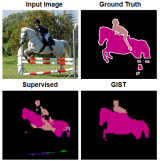
|
The GIST and RIST of Iterative Self-Training for Semi-Supervised SegmentationEu Wern Teh, Terrance DeVries, Brendan Duke, Ruowei Jiang, Parham Aarabi, Graham W. Taylor arXiv, 2021 paper Alternating between training on human labeled data and psuedo-labeled data stabilizes iterative self-training, enabling significant improvement in semi-supervised segmentation quality. |

|
Building LEGO Using Deep Generative Models of GraphsRylee Thompson, Elahe Ghalebi, Terrance DeVries, Graham W. Taylor NeurIPS ML4Eng Workshop, 2020 paper / code Generative model for sequential assembly, demonstrated by building LEGO structures piece-by-piece. |
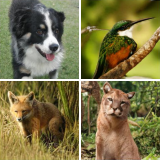
|
Instance Selection for GANsTerrance DeVries, Michal Drozdzal, Graham W. Taylor NeurIPS, 2020 paper / code Removing outliers from the training set trades GAN sample diversity for higher quality samples, faster training, and reduced model capacity requirements. |

|
ProxyNCA++: Revisiting and Revitalizing Proxy Neighborhood Component AnalysisEu Wern Teh, Terrance DeVries, Graham W. Taylor ECCV, 2020 paper / code ProxyNCA surpasses state-of-the-art metric learning methods when updated with a bag of tricks. |
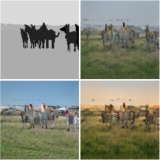
|
On the Evaluation of Conditional GANsTerrance DeVries, Adriana Romero, Luis Pineda, Graham W. Taylor, Michal Drozdzal arXiv, 2019 paper / code Conditional generative models can be evaluated by measuring the distance between real and generated joint distributions of images and conditioning. |

|
Does Object Recognition Work for Everyone?Terrance DeVries*, Ishan Misra*, Changhan Wang*, Laurens van der Maaten CVPR Workshop on Computer Vision for Global Challenges (CV4GC), 2019 paper / blog Publicly available object-recognition systems perform relatively poorly on household items in countries with a low household income. |
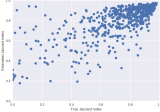
|
Leveraging Uncertainty Estimates for Predicting Segmentation QualityTerrance DeVries, Graham W. Taylor arXiv, 2018 paper Uncertainty estimates from segmentation networks can be used to predict the quality of the segmentations. |
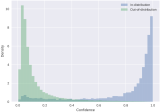
|
Learning Confidence for Out-of-Distribution Detection in Neural NetworksTerrance DeVries, Graham W. Taylor arXiv, 2018 paper / code Training a confidence estimation branch on classification networks enables identification of out-of-distribution examples. |
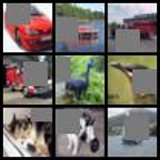
|
Improved Regularization of Convolutional Neural Networks with CutoutTerrance DeVries, Graham W. Taylor arXiv, 2017 paper / code Randomly masking square regions of pixels from training images is an effective form of data augmentation. |
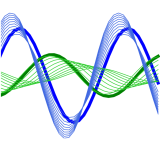
|
Dataset Augmentation in Feature SpaceTerrance DeVries, Graham W. Taylor ICLR Workshop, 2017 paper Datasets can be augmented by interpolating or extrapolating between datapoints in feature space to improve classification accuracy. |

|
Multi-task Learning of Facial Landmarks and ExpressionTerrance DeVries*, Kumar Biswaranjan*, Graham W. Taylor CRV, 2014 paper Facial expression recognition accuracy can be improved if the model is also trained to identify facial landmarks. |
|
Design and source code from Leonid Keselman's website, which is based on Jon Barron's website |